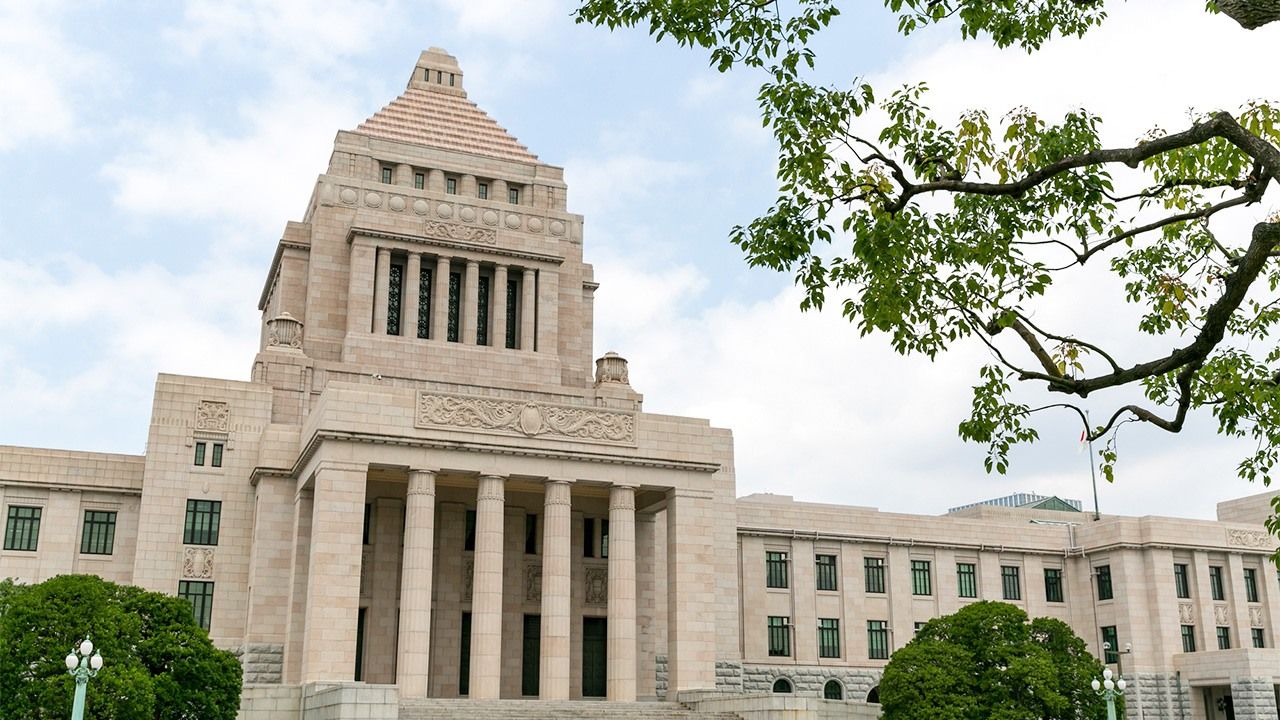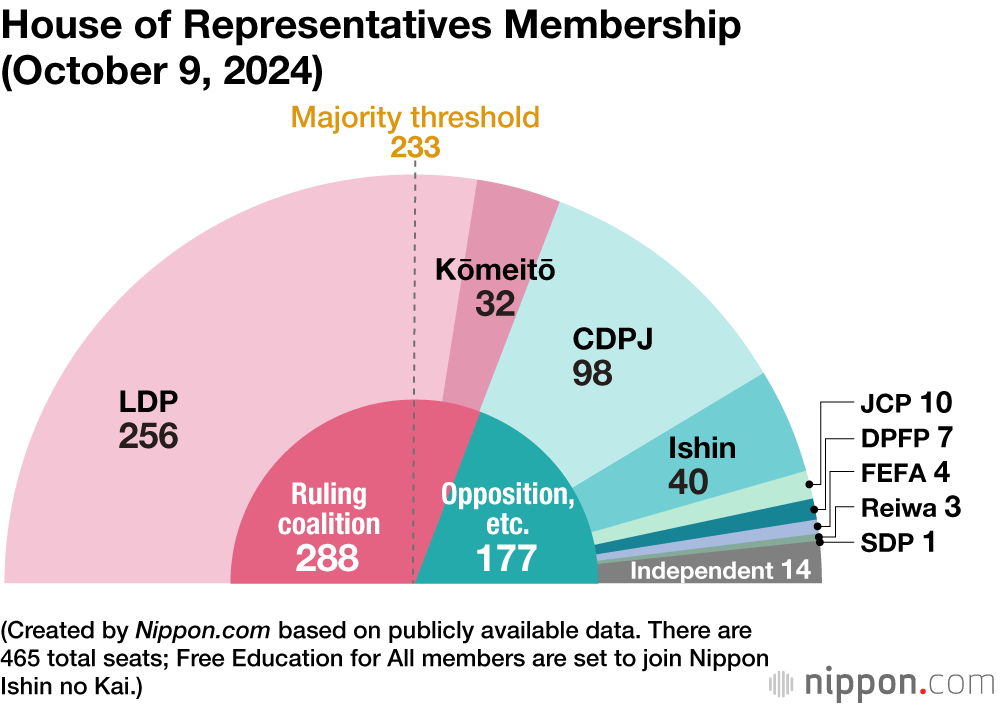
Japan’s 2024 General Election: Beleaguered LDP Aims to Hang on to Majority
Politics- English
- 日本語
- 简体字
- 繁體字
- Français
- Español
- العربية
- Русский
On October 9, Prime Minister Ishiba Shigeru dissolved the House of Representatives, just eight days after his premiership began, calling an election for October 27. The previous election took place in October 2021, shortly after Ishiba’s predecessor Kishida Fumio became prime minister. This year’s contest is the first major test for the ruling coalition of the Liberal Democratic Party and Kōmeitō since the emergence of the LDP kickbacks scandal, and will illustrate to what degree the party is able to win back the trust of voters.
The table below shows the number of registered candidates, as of October 15, running for the main parties in the 289 single-seat districts nationwide. Nippon Ishin no Kai and the Japanese Communist Party have greatly increased their numbers of candidates compared with 2021. An additional group—Free Education for All, or FEFA—has pledged to merge its membership with Ishin following the contest. In this election, there will be no coordination between opposition parties to avoid splitting the opposition vote in single-seat districts.
Candidates Fielded in the 289 Single-Seat Districts
| 2024 (2021) | |
|---|---|
| Ruling Coalition | |
| Liberal Democratic Party | 266 (277) |
| Kōmeitō | 11 (9) |
| Opposition | |
| Constitutional Democratic Party of Japan | 207 (214) |
| Nippon Ishin no Kai | 163 (94) |
| Japanese Communist Party | 213 (105) |
| Democratic Party for the People | 41 (21) |
| Reiwa Shinsengumi | 19 (12) |
| Social Democratic Party | 10 (9) |
| Sanseitō | 85 (0) |
At the time the lower house was dissolved on October 9, the LDP had 256 seats and Kōmeitō 32 for a coalition total of 288. This is 55 more than the majority threshold of 233 in the 465-seat chamber. At a press conference later on the same day, Ishiba set a low bar for success, saying that he aimed to maintain this coalition majority.
Apart from a simple majority, other possible targets would include the “stable majority” level of 244 seats, which would allow the coalition to chair all permanent lower house committees and ensure at least parity with the opposition in committee membership numbers; the “absolute stable majority” of 261 seats, which would allow it to chair and maintain a majority of seats in the committees; and the 310-seat two-thirds majority needed to pass revisions to Japan’s Constitution (also required in the House of Councillors).
In addition to the winning candidates from the 289 single-seat districts, an additional 176 members are selected in voting for 11 multiseat proportional representation blocks. On their ballots, voters select one candidate for the local seat, along with a political party for the PR block, resulting in a situation where a candidate can lose in the single-seat vote but still make it into the House of Representatives as the PR pick.
A 2022 revision to the Public Offices Election Act addresses vote disparity by adding a total of 10 single-seat electoral districts to 5 heavily populated prefectures, while removing 1 each from 10 prefectures with sparse populations. Together with other boundary changes, 140 constituencies in 25 prefectures are affected.
Japanese citizens aged 18 and older are eligible to vote in the municipality where they are registered as residents. Voting in principle takes place in person at polling stations from 7:00 am to 8:00 pm on election day, and votes are tabulated immediately after the polls close.
Among the lawmakers who have decided not to run for reelection in 2024 are CDPJ politician Kan Naoto, who was prime minister from 2010 to 2011 while leading the Democratic Party of Japan, and former LDP Secretary-General Nikai Toshihiro.
(Translated from Japanese. Banner photo © Pixta.)

